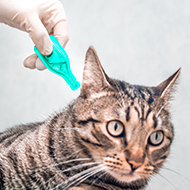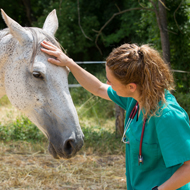Lemurs acquire drug-resistant bacteria by sharing environment with humans - study
Wild lemurs impacted by farming or tourism harboured more antibiotic-resistant microbes than those from more pristine enviornments.
The closer they live to people, the higher the proporation of antibiotic-resistant bacteria.
Scientists have found antibiotic-resistant bacteria in the guts of lemurs living near humans.
The study, published in the journal Frontiers in Ecology & Evolution, suggests that the more human interaction they have, the more antibiotic-resistant bacteria they harbour.
Researchers hope their findings will have a positive impact on conservation and wildlife management practices.
Study co-author and graduate student Sally Bornbusch, from Duke University, North Carolina, said: “Humans came along, developed antibiotics, spread them all around us, and propagated these resistance genes into natural environments and into the microbiomes of wildlife. Even if these results are slightly scary, they help us use microbiome science to hone veterinary practices and conservation activities.
In the study, researchers sampled dung from ring-tailed lemurs, and sequenced the genes of all microbes found in the dung to find genetic markers for antibiotic resistance.
The project included 10 lemur populations from across Madagascar, including seven from the wild, two from research facilities, and one kept as pets.
They found that the average proportion of antibiotic-resistant genes was 25 times higher in the guts of animals from research facilities than in wild animals, where the average amount was near zero. Interestingly, the figure was almost 35 times greater in lemurs kept as pets.
Researchers believe the increase in antibiotic-resistant bacteria in research lemurs is likely due to the good veterinary care they receive, giving them greater exposure to antibiotics than their wild cousins.
However, pet lemurs that likely never receive veterinary attention harboured the highest number of antibiotic-resistant genes. It is illegal to keep a lemur as a pet in Madagascar, so those that own them are unlikely to take them to a vet.
'These pet lemurs are therefore acquiring the antibiotic-resistant microbes simply by sharing their environment with humans and domestic animals,' researchers said.
Among the wild lemurs, antibiotic resistance varied depending on nearby human activity. Lemurs impacted by farming or tourism harboured more antibiotic-resistant microbes than those from more pristine environments, but still much less than lemurs living close to humans.
Bornbusch said that more research is needed to better understand the impact of these resistance genes on wildlife:
“Right now, we know that these resistance genes are out there, but we don’t know whether they are truly harmful to lemurs. These results give us a stepping-stone for research on the impact of these resistant microbes on wildlife and their environment.”







 The RCVS has announced a new version of its 1CPD mobile app, with enhanced features for veterinary surgeons and veterinary nurses to record their continuing professional development.
The RCVS has announced a new version of its 1CPD mobile app, with enhanced features for veterinary surgeons and veterinary nurses to record their continuing professional development.
